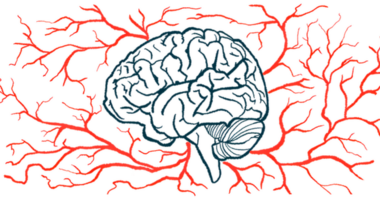Signs of Aging in the Eyes Tied to Higher Parkinson’s Risk

Markers of age in the retina — the layer of tissue at the back of the eyeball chiefly responsible for sensing light — can be used to predict the risk of future Parkinson’s disease, a new study indicates.
The study, “Retinal age gap as a predictive biomarker of future risk of Parkinson’s disease,” was published in the journal Age and Ageing.
Aging is a complex biological process, and the myriad ways that bodies change over time remain incompletely understood. Recent research has shown that the retina’s physical structure changes as people age. Here, a team led by scientists in China conducted an analysis to see whether analyzing these changes could help to predict Parkinson’s risk.
“As an extension of the central nervous system, the retina offers a unique and accessible ‘window’ to visualise” the health of nerve cells and blood vessels in the brain, the researchers wrote.
The team conducted analyses using data from the UK Biobank, which contains health-related information for over 500,000 U.K. residents, ages 40 to 69 years when they were enrolled between 2006 and 2010.
To determine “retinal age,” the researchers used machine learning. Over 19,000 retinal images from 11,052 people with no known chronic health conditions were fed into computer algorithms, along with data on the patients’ ages, and the computers identified age-associated features in the images.
The team then calculated the retinal age for 35,834 people who did not have Parkinson’s at the study’s start. Among the analyzed individuals, the average age was 56.7 years, just over half were female, and over 90% were white.
From the calculated retinal age, the team also determined a “retinal age gap” — the difference between their retinal age and their actual chronological age. A larger retinal age gap essentially means that a person’s retina “looks older” than their actual age would suggest.
During the median follow-up period of 5.83 years, 63 Parkinson’s cases were identified.
Statistical analyses showed that each one-year increase in retinal age gap was linked with a 10% higher chance of developing Parkinson’s at some point. The quartile of patients with the highest retinal age gap were at nearly five times higher risk of Parkinson’s, compared with the lowest quartile.
Further analyses showed that analyzing the retinal age gap could predict Parkinson’s risk with similar accuracy as an established risk model that includes factors like age, gender, and smoking status.
“The predictive value of retinal age and the well-established risk factors for [Parkinson’s] were comparable in our analysis,” the scientists concluded.
“Our findings shed light on the potential for retinal age gap to be utilised as a novel biomarker for identifying individuals at a high risk of developing” Parkinson’s, they added.
The team postulated that increased retinal age might be reflective of Parkinson’s-like damage occurring in the nervous system, though it stressed a need for further research to investigate these links.
“Further work is needed to disentangle specific physiological and pathological patterns from raw retinal age gaps to obtain sensitive, specific and clinically useful biomarkers of” Parkinson’s, the researchers concluded.







